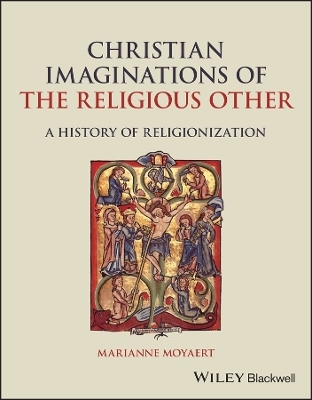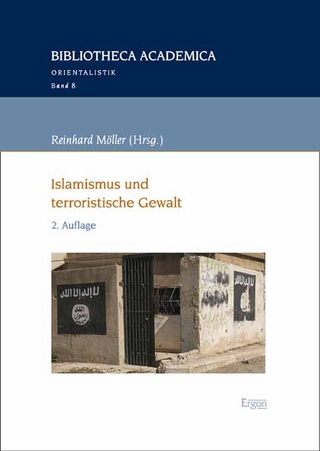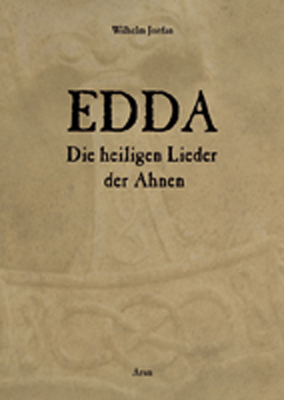
Christian Imaginations of the Religious Other
Wiley-Blackwell (Verlag)
978-1-119-54550-7 (ISBN)
Christian Imaginations of the Religious Other traces the genealogy of religionization, the various ways Christians throughout history have created a sense of religious normativity while simultaneously producing various categories of non-Christian "otherness." Covering a broad expanse of processes, practices, and socio-political contexts, this innovative volume analyzes the complex intersections of patterns of religionization in different eras while investigating their entanglements with racialization, sexualization, and ethnicization.
With a readable and accessible style, Marianne Moyaert offers a nuanced and well-balanced critical analysis of how and why Christianity’s otherswere named, categorized, essentialized, and governed by those exemplifying Christian normativity in Western European society. The author takes a longue durée approach — a long-term perspective on history that extends past human memory and the archaeological record — that integrates different case studies and a variety of ecclesial, theological, and literary documents. Throughout the text, Moyaert demonstrates how religionization shaped the ways Christians classified people, organized Christian societies, interacted with different Christian and non-Christian groups, and more.
Surveys the relationship between shifts in Christian normativity and the way non-Christians are imagined
Helps readers connect the lasting effects of patterns of religionization with their everyday experiences
Discusses the role of Christian expansion in the differential and unequal treatment of Christianity’s others
Examines legal regulations and disciplinary practices that were established to define the boundaries between Christians and non-Christians
Incorporates a wide range of scholarly resources, cutting-edge research, and the most recent insights and issues in the field
Includes textboxes with helpful summaries, illustrations, and commentary in each chapter
Christian Imaginations of the Religious Other: A History of Religionization is an excellent textbook for undergraduate and graduate courses ininterreligious studies, comparative theology, theological approaches to religious diversity, Christian-Jewish-Muslim relations, race and religion, and theorizing religion.
"Professor Moyaert is one of the world’s best scholars of comparative theology. In this magisterial new work, she helps scholars of religion to better learn how religious images, whether drawn with pictures or words, are crucial to how we understand ourselves and each other." - Amir Hussain, President, American Academy of Religion
"Breathtaking in scope and detail, Moyaert offers an original history of the ways Christians have projected distorted images of their religious ‘others,’ with devastating material consequences. Her illuminating story of the past is a searchlight for our present." - Jeannine Hill Fletcher, Professor of Theology, Fordham University
"Christian Imaginations is a superb study of the role that Western political programs play in the historical construction of identity boundaries. Analytically erudite and socially committed, Moyaert’s book powerfully interrogates what counts as religion making this text a must-read for anyone interested in interreligious studies." - Santiago Slabodsky, Florence and Robert Kaufman Professor in Jewish Studies, Hofstra University
"Raising the historical formation of religious identities to the level of contemporary treatments of gender and racialization, Christian Imaginations of the Religious Other is essential reading for students of religion." - Michelle Voss, Professor of Theology and Past Principal, Emmanuel College of Victoria University in the University of Toronto
"Crafting a Western European mosaic of religionization's turbulent history, Moyaert unveils how religious identities are constructed, hierarchies function, and their relevance for engaging diverse societies today worldwide." - Hans Gustafson, Adjunct Professor of Theology, University of St. Thomas
MARIANNE MOYAERT is Professor of Comparative Theology and the Study of Interreligious Relations at the Faculty of Theology and Religious Studies, KU Leuven, Belgium. She specializes in the comparative theology of religions, interreligious hermeneutics, and research into the religio-racialization. She has authored and edited several books including Fragile Identities: Towards a Theology of Interreligious Hospitality (2011), In Response to the Religious Other: Ricoeur and the Fragility of Interreligious Encounters (2014), and Interreligious Relations and the Negotiation of Ritual Boundaries: Explorations in Interrituality (2019).
List of Text Boxes xiv
Introduction 1
1 On the Notion of Religionization 2
2 Mechanisms of Religionization 4
Naming/Renaming 4
Categorization and Classification 5
Essentialization 5
Governance 6
3 The Particular Contribution of This Book 6
4 The Risk of Systematization and How I Seek to Avoid It 7
5 The Use of the Text Boxes 9
6 A Word of Gratitude 10
Notes 11
References 11
Part 1 Religionization in Early Christianity: Christians, Heretics, Jews, and Pagans 13
1 The Creation of Key Religionized Categories in Early Christianity 15
1 Religio and Its Counterpart Superstitio 16
Religio in Antique Times 17
Antiquity and Ethnicity of Religio 17
Pax Romana, Pax Deorum 18
Superstitio and Religio 19
2 Christians as Targets of Religionization 21
Christian Apologists and Ethnoreligious Reasoning 23
Crafting a Sense of Christian Ethnicity 23
Crafting Christian Religio as the Most Ancient 26
3 Christians against the Nations: The Distinction between Religio Vera and Falsa 27
Religio as True Worship of the True God 27
4 Crafting the Jew as Un- Christian 30
Jews, Christ- following Jews, and Christians from Gentiles 31
Adversus Iudaeos 32Anti- Jewish Typologies 33
The Supersessionist Logic 35
The Deicide Charge 36
5 Making the Figure of the Heretic 38
The Notion of Heresy 39
Adversus Haereses 40
6 Conclusion 43
Note 43
References 43
2 The Coercive Turn: Institutionalizing Religionized Categories 46
1 On Heresiology: Epiphanius’ Panarion 48
The Microscopical ‘Ethnographic’ Work of Epiphanius 48
Epiphanius’ Universal Account of History 50
2 When Heresiology Intersects with Imperial Law 51
3 The Codex Theodosianus and the Criminalization of Heresy 52
The Codex Theodosianus: De Haereticis 54
Augustine and the Persecution of Heretics 56
4 The Constantinian Turn and the Destruction of Paganism? 56
The Pagan as a Hermeneutical Figure 57
The Codex Theodosianus: De Paganis 59
5 Anti- Jewish Rhetoric and the Establishment of Jewish Tradition as Religio Licita 61
Anti- Jewish Rhetorics: Chrysostom as a Case in Point 62
Augustine’s Doctrine of Jewish Witness: A Different Sound 64
The Codex Theodosianus and the Jews 66
6 Islam Enters the Scene 67
Early Christian Interpretations of Islam 67
Jews and Ishmaelites and Their Place in Christian Imagination 70
Christian Saracen Law 71
7 Conclusion 72
Notes 73
References 73
Part 2 Body Politics in the Aftermath of the Gregorian Reform 77
An Ongoing Spiritual Drama 78
References 79
3 Unification, Purification, and Dehumanization 81
1 The Time of the Crusades and Dehumanizing Saracens 82
The Emergence of Crusading Ideology 82
The Saracen as Pagan 84
Defiled, Monstrous Black Bodies 86
The Danger of Blurring Religious Boundaries 87
The Conflation of Jew and Muslim 89
2 The Deteriorating Fate of the Jews 91
Flashback: The Jews and the Legacy of Antiquity 92
The Jews under the Frankish Merovingians and the Carolingians 92
The Jew: From Unwilling Witness to Enemy, Child Murderer, and Usurer 93
Crusading Ideology and the Jew as Christianity’s Internal Enemy 94
Jews and Usury 94
Blood Libels 95
Blackness, Disfiguration, and Bodily Afflictions 96
3 The Return of the Problem of Heresy 98
Flashback on Heresiology 98
The Disappearance and Return of the Problem of Heresy 98
The Cathars and Waldensians 99
Polemical Depictions of Heresy 100
Heretics as Foxes 100
Heretics as Morally and Sexually Perverse Creatures in the Service of Satan 102
The War on Heresy 104
Preaching 104
Crusading 104
The Inquisition 105
4 The Fourth Lateran Council 106
5 Conclusion 109
Notes 109
References 109
4 The Spanish Catholic Monarchy and Religio- racialization 113
1 The Reconquista and the Re- Christianization of the Iberian Peninsula 114
Reclaiming Space: Converting and Cleansing Mosques 116
Law Making 117
On the Jews (De los judíos) 118
On the Moors (De los moros) 119
2 The Long Road towards Blood Purity Laws 120
Crusading Ideology and the Ideal of Christian Visigothic Descent 120
Increasing Anti- Judaism 122
The Conversionist Programme of the Mendicant Orders 122
Conspiracy Theories: Treason, Ritual Murder, and Poisoning 123
Economic Motives 123
Political Instability 124
3 Forced Mass Conversions 125
Questions about Authenticity 125
Conversos Destabilize Boundaries 126
4 Law Making: Limpieza de Sangre 128
5 The Catholic Monarchs and the Purgation of the Spanish Monarchy 130
6 The Religio- racial Project of the Spanish Catholic Monarchy: An Exceptional Case? 133
7 Columbus, New Worlds, and the Question of Religion 134
First Encounters 135
No Religion 136
8 Conclusion: Blurring Boundaries between Racialization and Religionization 139
Notes 141
References 142
Part 3 The Long Reformation 145
5 The Turn Inwards 149
1 Mediation, Fear of Death, Excess, and Corruption 151
The Church and the Mediation of Salvation 151
Death, Purgatory, and Intercession 153
Corruption, Abuse, and the Practice of Indulgences 153
Catholic Piety under Critique 154
2 The Modern Devotion 155
Geert Grote: The Fountain of Modern Devotion 156
The Brethren of the Common Life and the Reinterpretation of Religio 157
3 Christian Humanism 159
In Praise of Folly 159
Scripture as the Cornerstone of Christian Life 161
Erasmus on Judaism 162
4 Martin Luther 164
A Reformed and Purified Christian Norm 165
5 Erasmus and Luther: Profound Disagreements 166
Reforming Christian Faith and Projecting False Religion onto the Enemies of God 168
6 The Colonial Project and the Question of True Religion 171
Context 171
Juan Ginés de Sepúlveda 172
Bartolomé de las Casas 173
José de Acosta 174
7 Protestantism and the Rejection of the Principle of Mediation 175
8 Conclusion 177
Notes 178
References 178
6 The Fragmentation of Religion and the Re- creation of Society 181
1 Polemics and the Dehumanization of Religious Others 182
Sexual Slander 183
Corrupted Souls and Diseased Bodies 184
2 Protecting the Socio- political Order: Expulsion, Confiscation, Torture 187
Rituals of Purgation 189
Iconoclasm 189
Humiliating, Killing, and Exhuming Heretical Bodies 190
3 The Legal Establishment of the Fragmentation of Religion 190
Peace Treaties and the Redefinition of the Binary of Orthodoxy/Heresy 191
The Peace of Augsburg 192
4 Religionization as Confessionalization 195
Confessionalization and the Making of Bounded Communities 197
The Propagation of True Christianness 197
Ritual 199
Space 201
Education 202
Censorship 203
Discipline 204
5 The Parting of the Ways and Confessional Identity Markers 204
6 Conclusion 205
Notes 206
References 207
7 Reconfiguring True Religion in Terms of Toleration 211
1 Sebastian Castellio: Beyond Coercion 213
Context 214
Preface Dedicated to Count William of Hesse 215
Dedication to Duke Christoph of Württemberg 218
2 John Locke on Toleration 220
Toleration as a Characteristic of Being a True Christian 221
True and False Religion 222
The Magistrate 223
What Is a Church? 224
The Scope of Tolerance: Jews, Muslims, and Pagans 226
Extending Toleration to the Pagans 227
The Limits of Toleration 227
Crafting Judaism, Islam, and Paganism as ‘Religions’: Legal and Political Consequences in Europe and Beyond 228
3 Voltaire and the Problem of Fanaticism 229
Context 230
The Case of Jean Calas 230
The Fanatic as a Rhetorical Figure 231
Refuting Theological Religion 233
Christianity 234
Judaism 235
Islam 237
Deism/Theism 238
Deism, Orientalism, and the Construction of the Religion of India 240
Comparing Religions in Voltaire’s Work: Decentring and Recentring Christianness 242
4 Conclusion 243
Notes 244
References 245
Part 4 The World Religions Paradigm and the Turn to Dialogue 249
1 What Is the World Religions Paradigm? 249
2 Old Patterns of Religionization Function as Building Blocks 250
Interiorization 251
Confessionalization 251
Religio- secularization 252
3 Gathering Data in a Context of Colonization 253
4 The World Religions Paradigm: Another Emancipatory Myth? 255
Notes 256
References 256
8 Religio- racialized Taxonomies Based on Comparative Philology 257
1 The Fixation on Creating ‘Scientific’ Taxonomies of Race 259
Biblical Taxonomies 259
Ethnographic Explorations 260
Comparative Philology 261
2 Romantic Musings about Language as the Gateway to the Spirit of People 262
Comparative Philology, Grammar, and Race 263
3 The Discovery of the Indo- European Language Family 265
Oriental Jones and the Indo- European Hypothesis 265
The Indo- European Myth as Colonial Ideology 266
4 Friedrich Schlegel’s Comparative Philology and German Romanticism 267
About the Language and Wisdom of the Indians 267
Inflection and Agglutination 267
5 Ernest Renan and the Invention of the Semite 270
Semitic and Aryan People 270
Semitic Monotheism and a Religious People 273
Comparing Religions 274
On Judaism 274
On Christianity 275
On Islam 277
6 Friedrich Max Müller: ‘He Who Knows One Religion, Knows None’ 279
Religion as One and Plural 280
7 The Task of Classification 282
The Religions of the Book and the Rest 284
8 Conclusion 286
Note 287
References 287
9 The Dialogical Turn beyond Religionization? 291
1 The World Parliament of Religions in Chicago 292
World Fairs 292
The Columbian World Fair and National Pride 293
The Tripartite Structure of the World Fair 294
The Parliament of Religions as Performance of the World Religions Paradigm 296
Religion Is One and Many 297
Interreligious Brotherhood and Religio- secularization 298
The Religions of the World and the Rest: Religio- racialization Exhibited 300
Talking Back 302
Interreligious Brotherhood as a Depoliticized Discourse 303
2 The Second Vatican Council as a Watershed 304
Opening the Windows 304
Larger Context 305
Dialogue as a Key Aspect of Christian Self- understanding 305
Nostra Aetate 307
The Institutionalization of Dialogue 312
The Ritualization of Dialogue 313
Changes in the Good Friday Liturgy 313
Interfaith Blessings 315
John Paul II Visits the Synagogue of Rome 315
The Day of Prayer in Assisi 316
The Dialogical Turn and the Renegotiation of the Religio- secular Divide 316
The Dialogical Turn and the Erasure of the Religio- racial Constellation 318
The Dismantling of the Religio- racial Constellation 319
The Masking of the Religio- racial Constellation 320
The Dialogical Turn and the (Non-)Shared Fate of Jews and Muslims in the Christian Imagination 321
3 Dialogue in Post- secular Society 322
The Return of Religion 322
The Two Faces of Religion 323
Interfaith Dialogue and the Performance of Good Religion 325
Education, Citizenship, and the Promotion of Interfaith Competences 326
Islam as Europe’s Other 328
4 Conclusion 329
Notes 331
References 332
Conclusion 337
Index 339
| Erscheinungsdatum | 24.08.2020 |
|---|---|
| Verlagsort | Hoboken |
| Sprache | englisch |
| Maße | 213 x 272 mm |
| Gewicht | 816 g |
| Themenwelt | Geisteswissenschaften ► Religion / Theologie ► Weitere Religionen |
| ISBN-10 | 1-119-54550-1 / 1119545501 |
| ISBN-13 | 978-1-119-54550-7 / 9781119545507 |
| Zustand | Neuware |
| Informationen gemäß Produktsicherheitsverordnung (GPSR) | |
| Haben Sie eine Frage zum Produkt? |
aus dem Bereich


